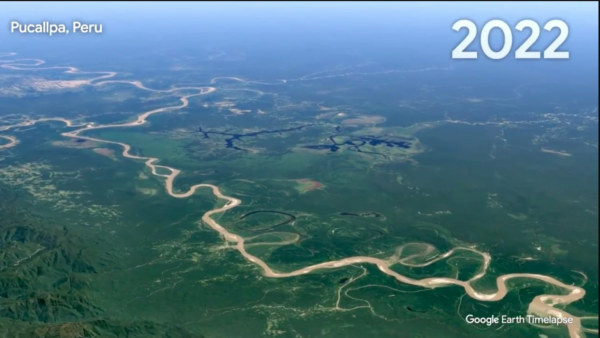Google Earth’s zoomable timelapse video of our planet now includes satellite images from 2021 and 2022. The 4D interactive map features nearly four decades of planetary change, from 1984 to 2022, such as emerging irrigation systems, shifting rivers, volcanic eruptions, and transformative wildfires.
“The imagery also depicts the ways in which communities have adapted to combat climate change,” Google Earth Engine program manager Chris Herwig wrote in a blog post, citing offshore wind farms in Denmark and large-scale solar installations in Spain.
Google Earth introduced Timelapse in 2021, allowing users to view our planet “in a completely new dimension — time,” as stated by the company, which merged together 24 million satellite images from 37 years to create the interactive experience.
No spring break? Google Earth Timelapse now has 2021 and 2022 footage.

In a distinct library(Opens in a new window), more than 800 videos spanning more than 300 locations are organized by topic (urban expansion, forest change, infrastructure, agriculture, fragile beauty, megacities, etc.) and region (Asia-Pacific; Europe, the Middle East, and Africa; North America; Latin America; Antarctica).
NASA’s Pictures of Change exhibit now has a Google Earth-generated timelapse image.
According to Herwig, “anyone, from researchers to educators, can use these videos to better comprehend our planet’s transformation.” In fact, it was already featured in the 2022 documentary The Territory, which used Timelapse to illustrate deforestation throughout the Amazon and its impact on local communities.
Choose “Timelapse” from the viewing options at the bottom of the page (when available) to observe footage of the Great Salt Lake’s decline in Utah or Cancn, Mexico’s population growth. Then, select the play/pause button to the left of the timeline and modify the video speed (0.25x, 0.5x, or 1x) on the opposite side of the timeline.

